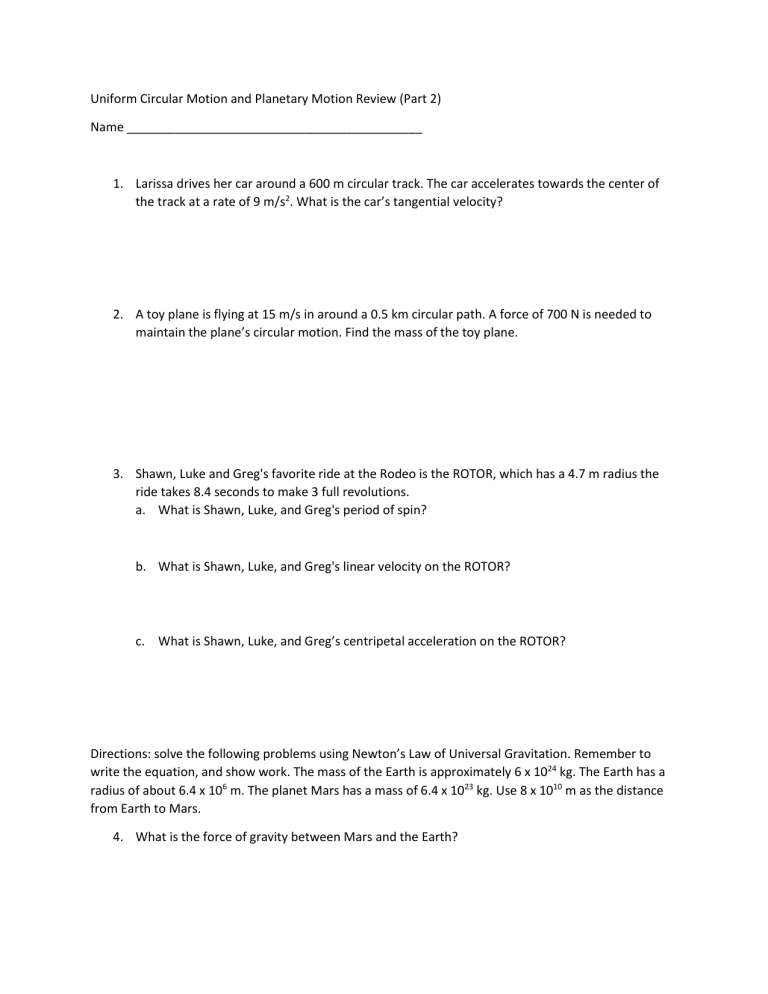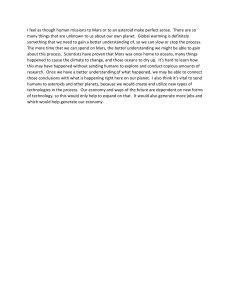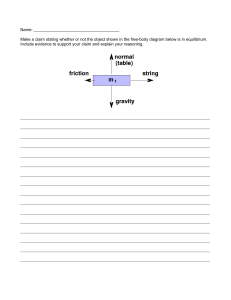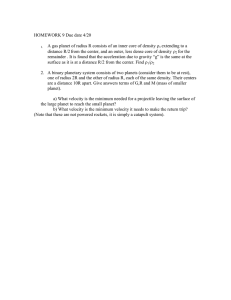
Uniform Circular Motion and Planetary Motion Review (Part 2) Name ___________________________________________ 1. Larissa drives her car around a 600 m circular track. The car accelerates towards the center of the track at a rate of 9 m/s2. What is the car’s tangential velocity? 2. A toy plane is flying at 15 m/s in around a 0.5 km circular path. A force of 700 N is needed to maintain the plane’s circular motion. Find the mass of the toy plane. 3. Shawn, Luke and Greg's favorite ride at the Rodeo is the ROTOR, which has a 4.7 m radius the ride takes 8.4 seconds to make 3 full revolutions. a. What is Shawn, Luke, and Greg's period of spin? b. What is Shawn, Luke, and Greg's linear velocity on the ROTOR? c. What is Shawn, Luke, and Greg’s centripetal acceleration on the ROTOR? Directions: solve the following problems using Newton’s Law of Universal Gravitation. Remember to write the equation, and show work. The mass of the Earth is approximately 6 x 1024 kg. The Earth has a radius of about 6.4 x 106 m. The planet Mars has a mass of 6.4 x 1023 kg. Use 8 x 1010 m as the distance from Earth to Mars. 4. What is the force of gravity between Mars and the Earth? 5. What is the force of attraction between an average human (assume m = 90 kg) and the earth? 6. What is the force of gravity between Rachel and her car (m = 2300 kg) and the moon (m = 7.4 x 1022 kg). Use 3.8 x 108 m as the distance between the moon and Earth. Kepler’s Laws: 7. An extrasolar planet (A planet in a different solar system) around the star HD 92788, with a similar mass to that of our sun, has been found to have an orbital period of .956 years. What is the average distance from the planet to the star if k = .8 for that solar system? (Hint: this time you have to convert the period into seconds first!) 8. The Hubble space telescope is in an orbit 590 km above the earth. The International Space Station is at an orbit of 407 km above the earth. A) Which object has a faster orbital velocity? B) Which object has a longer period?



